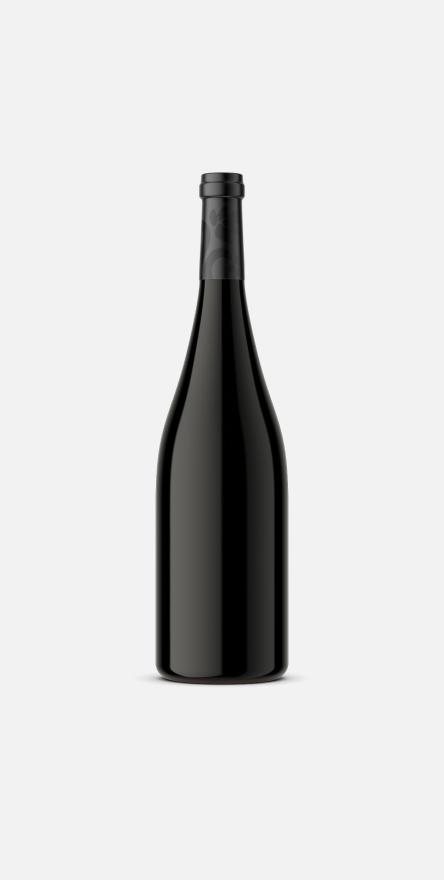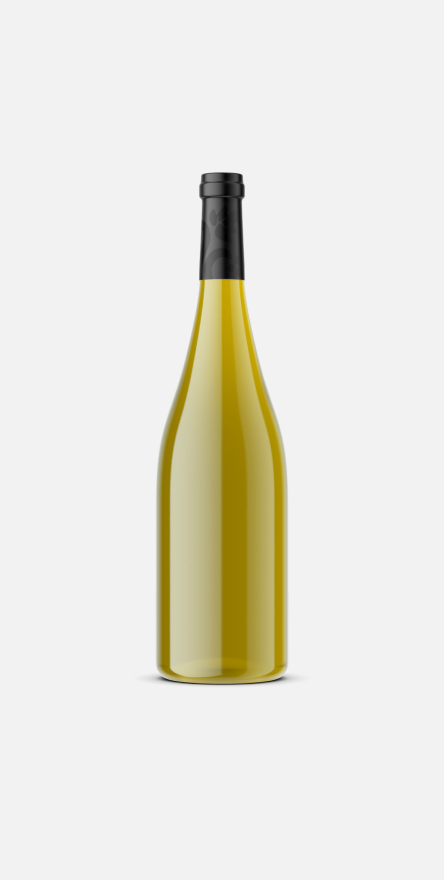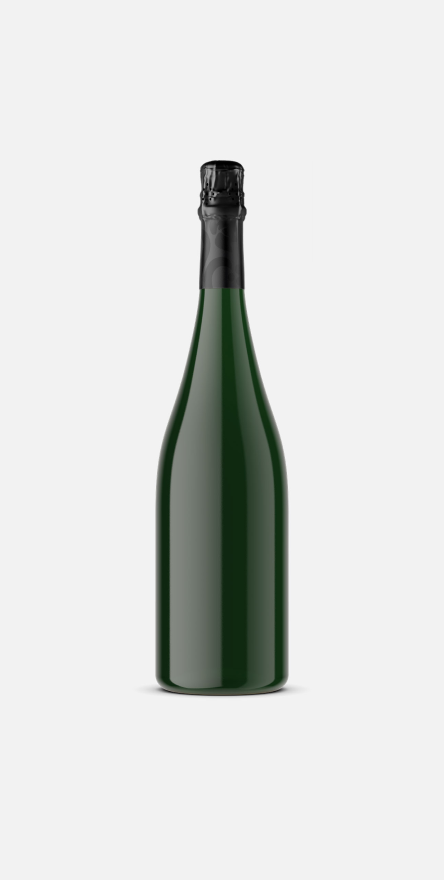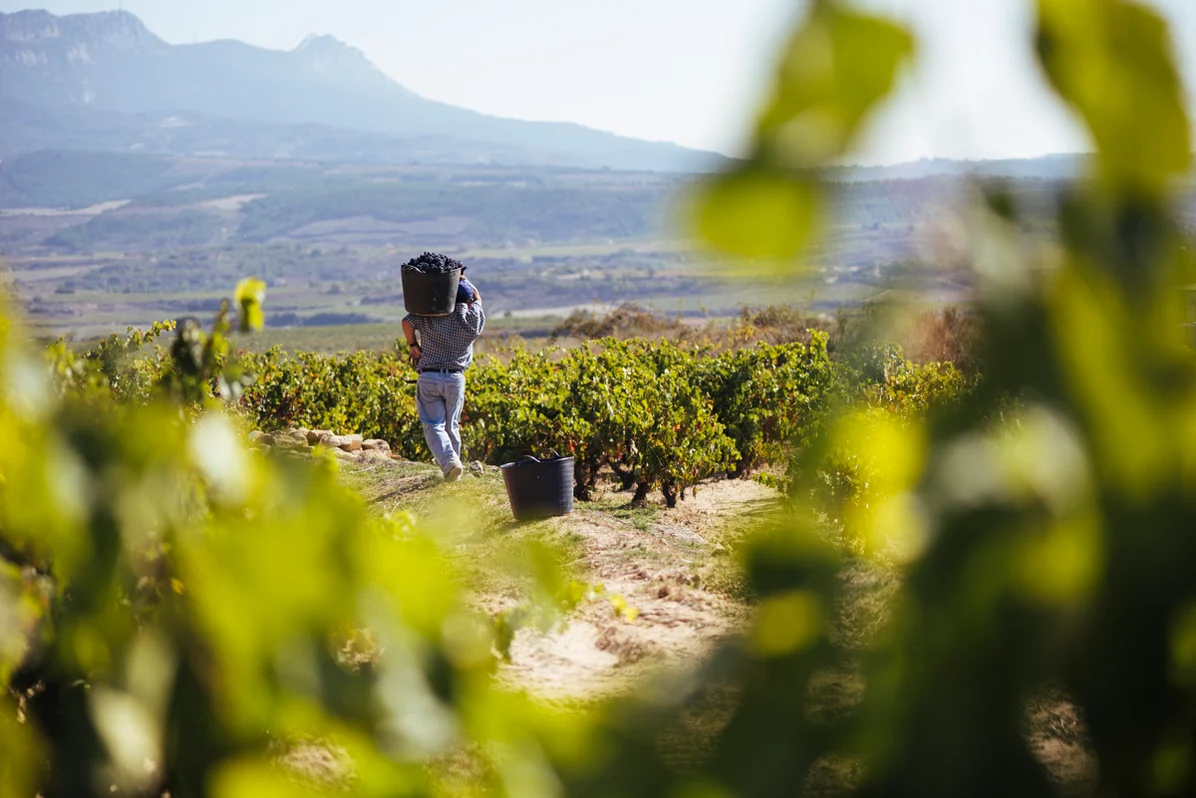What type of grapes are used in Rioja?
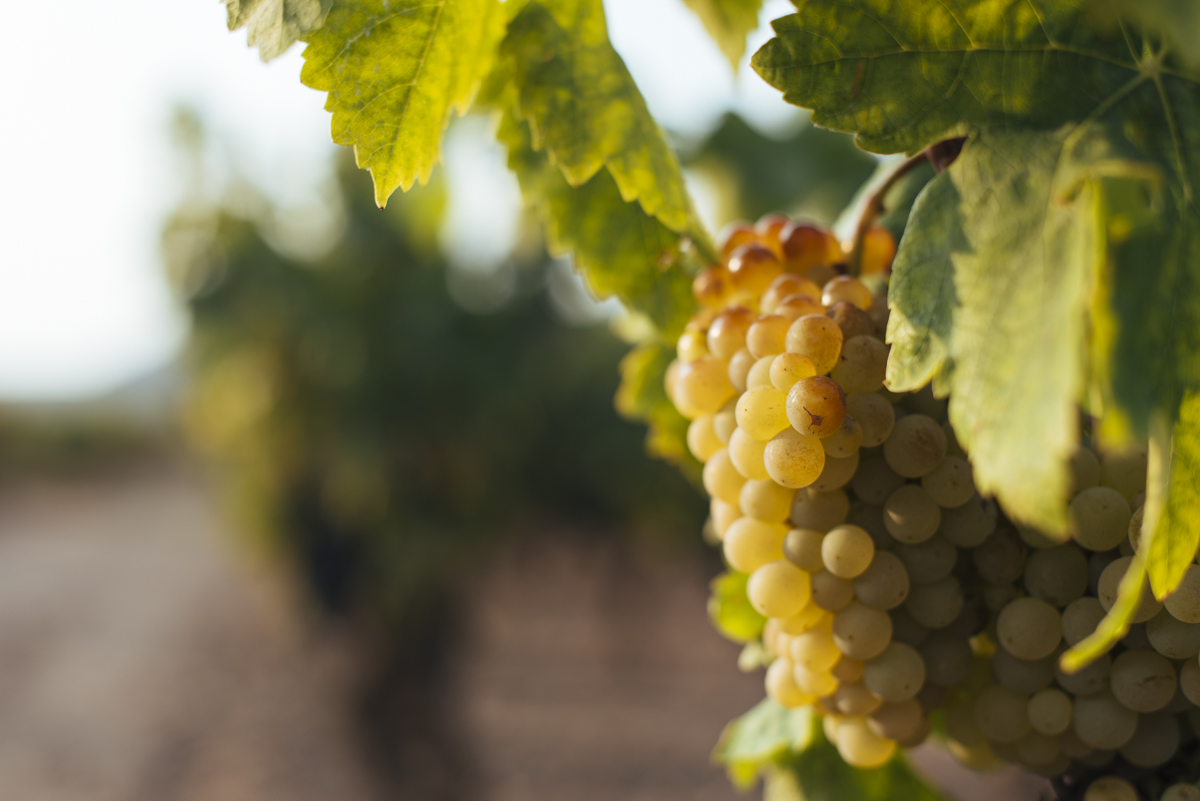
In the Rioja Qualified Designation of Origin, the diversity of grapes awakens a range of aromas and flavours that characterise every sip. Have you ever wondered about the grapes that give life to the distinguished wines of this region? Join us on a journey through the varieties that make up Rioja’s rich palette.
Red Grape Varieties in QDO Rioja
Rioja is a wine region famous for its tradition, innovation and exceptional quality in wine production. Five red grape varieties are grown in the QDo: alongside the iconic Tempranillo, which occupies most of our plantation, we have the Garnacha, which stands out for its freshness and versatility. Also, the Graciano, known for its aromas, colour, acidity and intensity in the mouth, and the Mazuelo, characterised by its abundant tannins, high acidity and stable colour. Finally, the Maturana Tinta was incorporated in 2007 although, curiously, it is one of the varieties with the longest history.
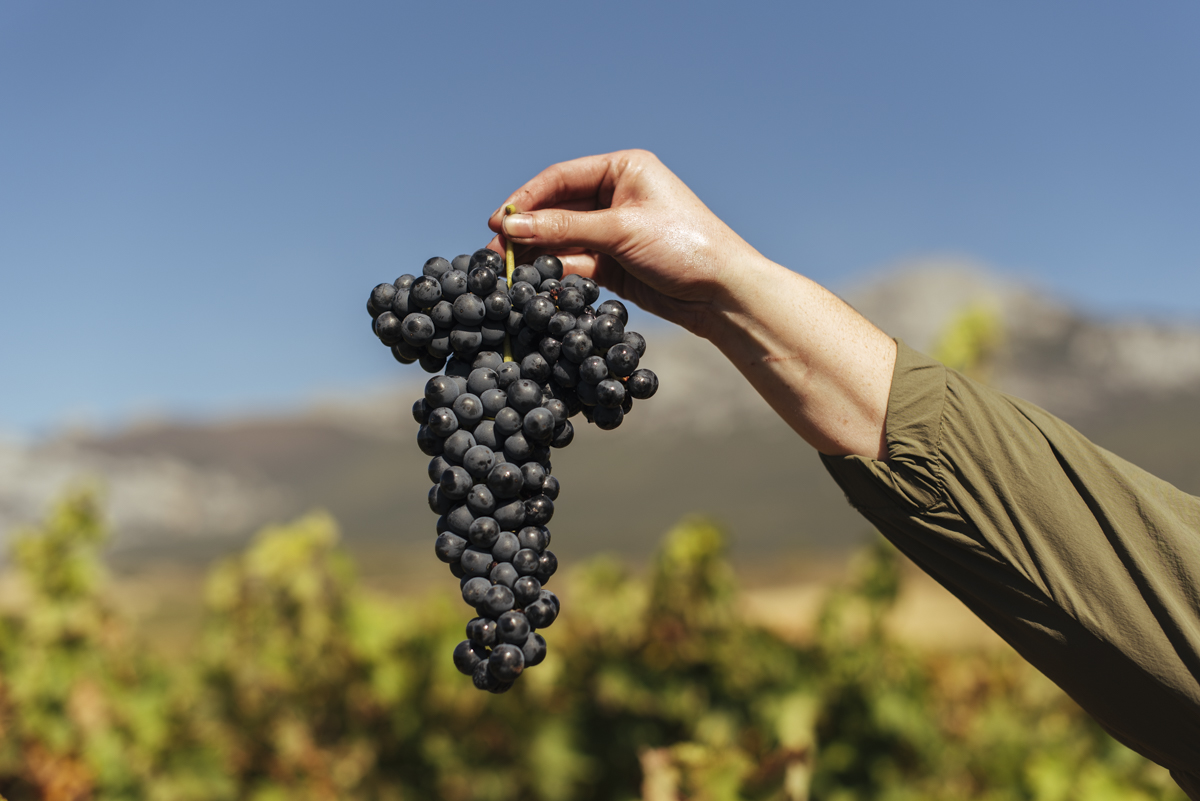
Tempranillo
The Tempranillo grape is considered an autochthonous variety of Rioja, providing refinement and a diverse aromatic palette. Its versatility allows it to produce smooth, delicate wines or powerful, structured wines with great ageing potential.
Garnacha
Although it has lost ground to the Tempranillo variety, the Garnacha grape stands out in eastern Rioja for its freshness and versatility. Its early budding and late ripening produce alcoholic and smooth wines that are perfect for a variety of occasions. From light reds to easy-drinking rosés, Garnacha reveals its charm in every sip.
Graciano
With its growing presence, the Graciano stands out for its intense colour, high levels of tannin and marked acidity. Fruity aromas of cherries, red fruits and a touch of pepper define its personality. Its ageing capacity makes it a key component for long-lived and complex wines.
Mazuelo
Although a minority variety, Mazuelo brings structure and rich red fruit aromas to Rioja wines. Its strong tannins and high acidity make it a valuable component, complementing the flavour palette and contributing to the longevity of certain red wines.
Maturana Tinta
The Maturana Tinta is a variety that is gaining in importance as it adds intense colour and tannins to Tempranillo wines. Although historically cultivated, it was rescued from extinction and included in the QDO Rioja in 2007.
With a short growth cycle, its late budding and early ripening do not prevent it from achieving high sugar levels in exposed areas. The bunches are compact, with medium-sized grapes and thick skin. Vulnerable to diseases such as botrytis, it produces wines with a deep colour and herbaceous aromas.
White grape varieties in QDO Rioja
Since 2005, the Rioja Strategic Plan has included as one of its priorities for the development of the Designation of Origin the promotion of a new policy for white wines. This initiative culminated in the inclusion of new white varieties in the regulations and the authorisation to plant 2,500 new hectares exclusively for these white varieties, which began to bear fruit in 2013.
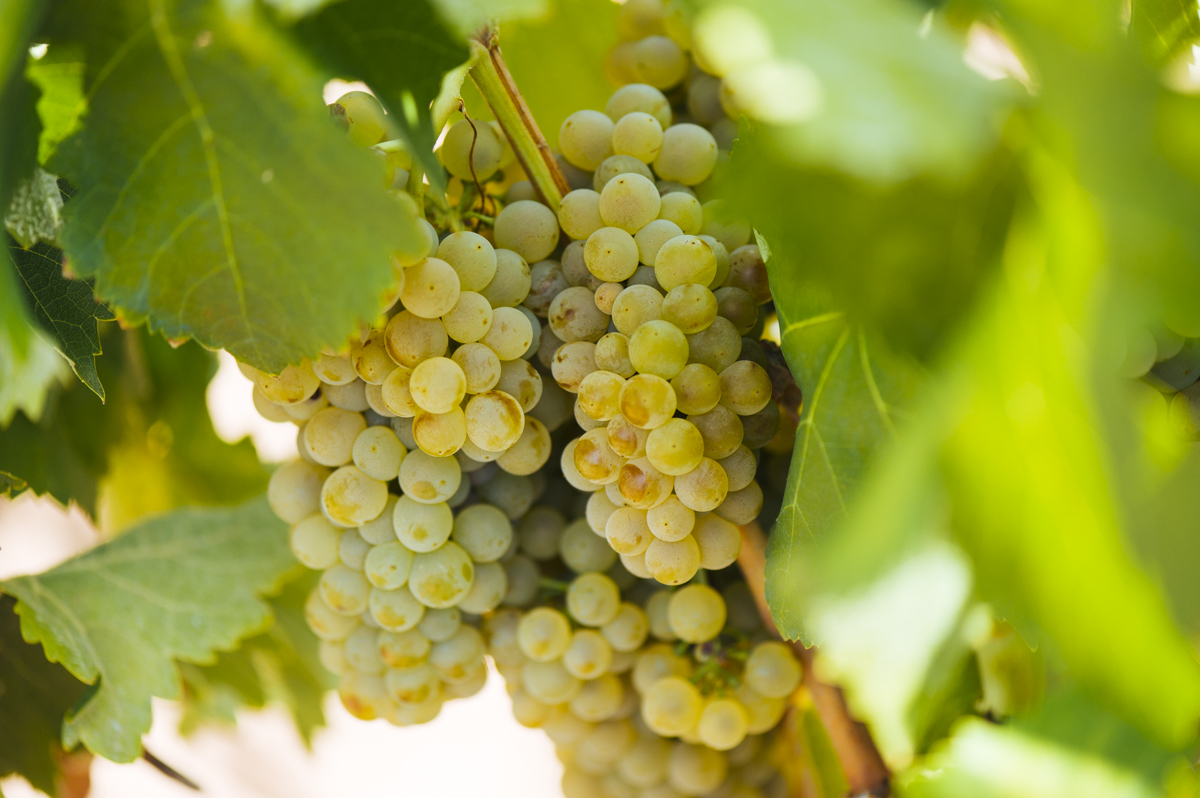
Viura
It is the main white variety in QDO Rioja and represents about 70% of the total surface destined to white varieties in the region. It buds and ripens later than other white varieties and is usually harvested at the same time as Tempranillo.
Generally speaking, it is a very aromatic variety, with aromas of green apple, almond and white flowers. Its wines are usually of medium acidity, which explains their special place in gastronomy. They are young, fresh wines that can be easily combined with many dishes.
Malvasía
Malvasia, with its particular aromas, produces full-bodied white wines. Its primary aromas are of low intensity, emphasising the depth and intensity of the secondary aromas. It is aged in oak barrels, which gives it a rich texture and good body.
Garnacha Blanca
This variety is the result of a mutation of Garnacha Tinta, with which it shares similarities, producing wines that are alcoholic and rich in extract, but lacking in aroma and acidity. It can be used in blends with other white varieties or in single varietals.
Tempranillo Blanco
It is a unique and autochthonous Rioja variety, since it is the result of a natural genetic mutation in a single shoot of a Tempranillo Tinto vine found in 1988 in an old vineyard in Murillo del Río Leza, La Rioja. This variety does not exist anywhere else in the world..
Maturana Blanca
First mentioned in 1622, Maturana Blanca is characterised by its balance between acidity and bitterness. Its greenish-yellow wines offer aromas of apple, banana and citrus fruits.
Turruntés
This is one of the least cultivated varieties in QDO Rioja, with less than 10 hectares. Its grapes are medium sized and compact, with medium-sized berries that, when ripe, take on a golden colour with dark spots. It produces wines with a low alcohol content and high acidity, with a straw-yellow colour, greenish reflections and fruity aromas with a predominance of apple.
Chardonnay
Originally from Burgundy, this is a very versatile white grape that can be found all over the world.
It is a low yielding variety that produces wines of great finesse and aromatic intensity, yellow in colour with greenish reflections. When aged, it has notes of vanilla, honey and butter.
Sauvignon Blanc
Originally from the Loire region, the Sauvignon Blanc variety has spread all over the world and has become very popular. These wines are typical for their intense herbaceous, vegetalble (green pepper, asparagus), citrus and tropical aromas. As with other varieties, it behaves differently depending on the climate in which it is grown.
Verdejo
The Verdejo, known nationally, offers white fruity and herbaceous aromas. Its medium acidity and moderate body make it an ideal choice.
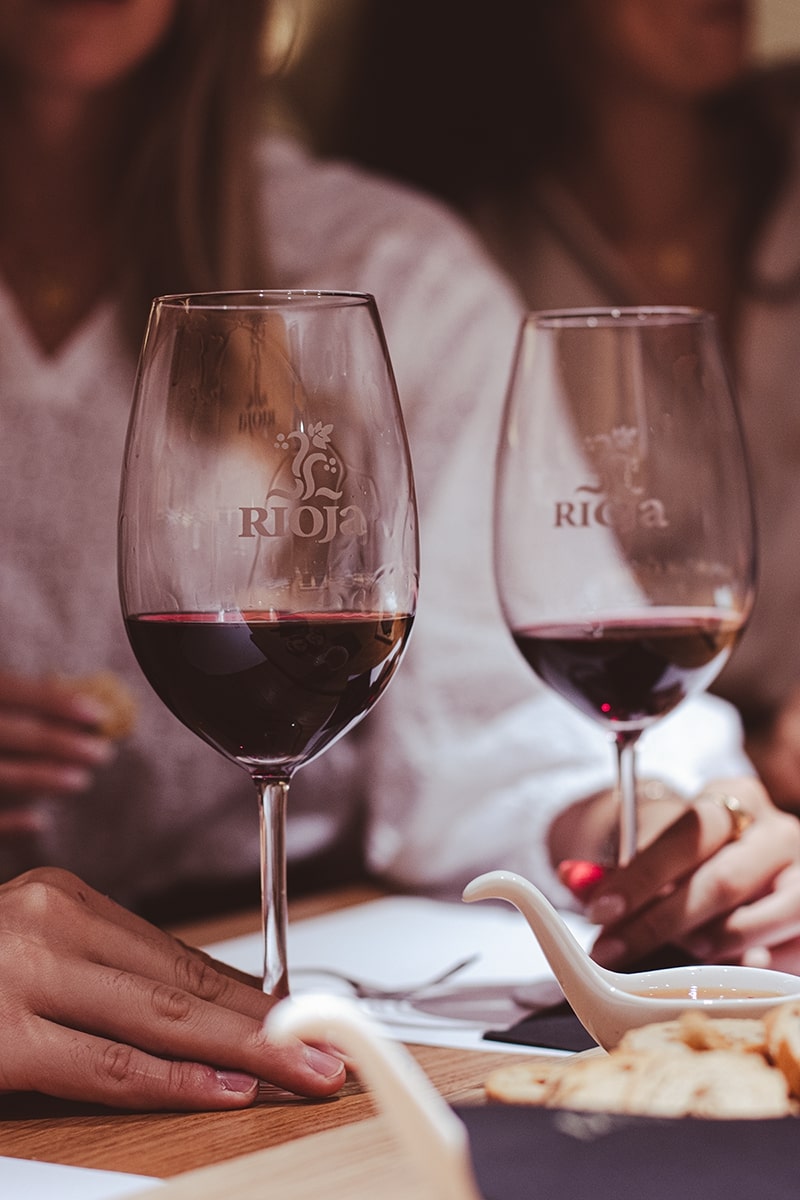
To explore this mosaic of grapes is to immerse yourself in the richness of a region that celebrates diversity in every glass. What will be your next choice be in this fascinating wine world? Find out in Rioja!
